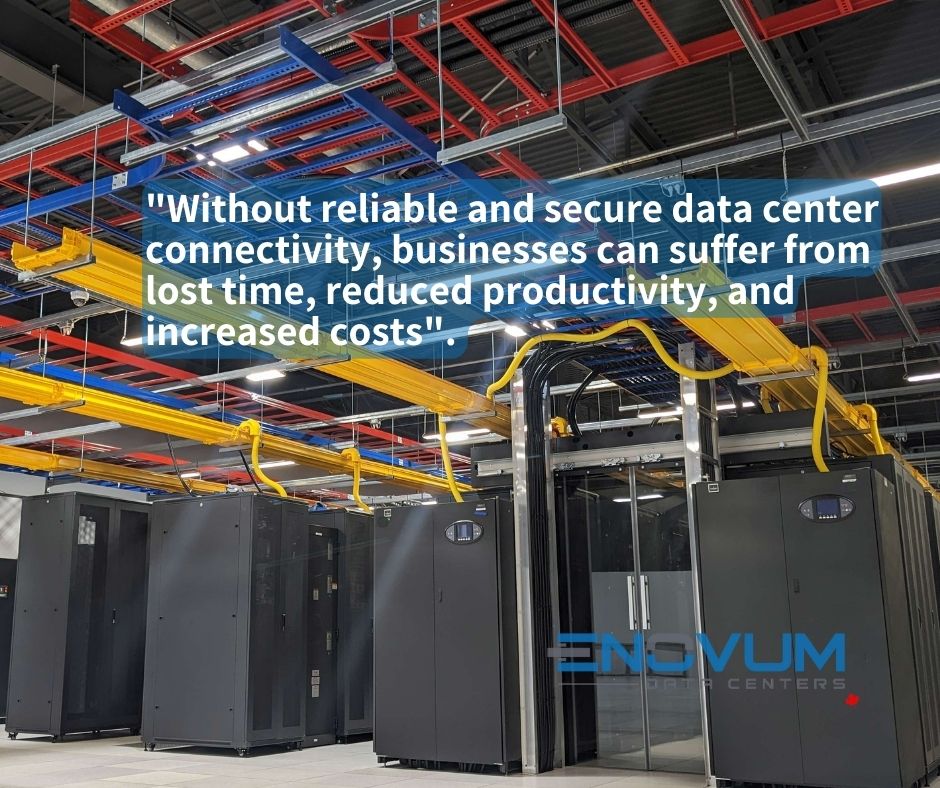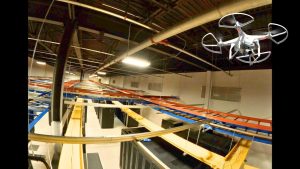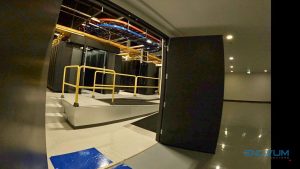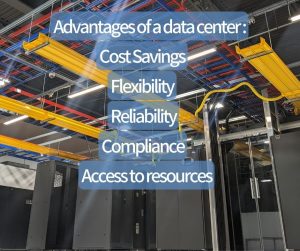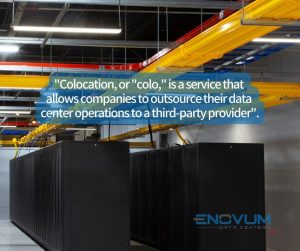In today’s digital world, the need for reliable and secure data center connectivity is more important than ever. Data centers are the backbone of a business’s IT infrastructure, and ensuring that they are connected seamlessly is a critical part of any successful organization. One of the most popular methods of data center connectivity is through the use of cross-connects. Let us explore the different types of cross-connects, the benefits they offer, and how to select the right one for your organization.
What is a Data Center and Why is Connectivity Important?
A data center, like Enovum, is a physical facility that houses the hardware and software necessary to store and process data. These facilities are used by organizations for data storage and processing, as well as for networking and communications. Data centers are typically owned and operated by businesses and organizations, or by third-party service providers.
Data center connectivity is essential for many organizations, as it allows them to securely and reliably access the data stored in their data center. Data center connectivity also allows for efficient and secure communication between different parts of an organization’s IT infrastructure. Without reliable and secure data center connectivity, businesses can suffer from lost time, reduced productivity, and increased costs.
What is a Cross-Connect?
A cross-connect is an interconnecting cable or wiring system that connects two or more data centers. Cross-connects are used to establish direct connections between data centers, and they can be used to connect different types of data centers, such as private, public, and hybrid.
Cross-connects are typically composed of copper wires, optical fibres, or a combination of both. These cables are used to provide a direct connection between two or more data centers, and they can also be used to connect data centers with other networks, such as the internet.
Types of Cross-Connects
There are several types of cross-connects available, each designed for specific applications and environments. The most common types of cross-connects are:
Copper cross-connects: Copper cross-connects are the most common type of cross-connect, and they are typically used to connect two or more data centers via copper wires. Copper cross-connects are typically used in shorter distances, and they are ideal for connecting data centers located in the same building or in the same city.
Fiber cross-connects: Fiber cross-connects are typically used for longer distances, and they are ideal for connecting data centers located in different cities or countries. Fiber cross-connects are typically composed of optical fibers, and they offer higher speeds and data throughput than copper cross-connects.
Wireless cross-connects: Wireless cross-connects are becoming increasingly popular, and they are ideal for connecting data centers located in remote locations. Wireless cross-connects are typically composed of wireless radio signals, and they offer high speeds and data throughput with minimal installation costs.
Benefits of Using Cross-Connects
Cross-connects offer a number of benefits for organizations, including:
Increased Security: cross-connects provide a secure connection between data centers, which helps to protect sensitive data from unauthorized access. Cross-connects also help to ensure that data is transferred securely, and they can be used to create secure communication channels between data centers.
Improved Reliability: cross-connects provide a reliable connection between data centers, which helps to ensure that data is transferred quickly and efficiently. Cross-connects also help to ensure that data centers remain connected even in the event of a network failure.
Cost-Effectiveness: cross-connects are typically less expensive than other forms of data center connectivity, such as leased lines or satellite connections. Cross-connects also require minimal installation and maintenance costs, which helps organizations to reduce their overall IT costs.
How to Select the Right Cross-Connect
When selecting a cross-connect for your organization, it is important to consider a number of factors, including the type of data center, the distance between data centers, the bandwidth requirements, and the security requirements.
It is also important to consider the cost of the cross-connect, as this will help to determine the best option for your organization. It is also important to consider the type of technology used in the cross-connect, as this will help to ensure that it is compatible with your organization’s existing IT infrastructure.
Once you have considered these factors, you should contact a reputable cross-connect provider to discuss your needs and the options available. A reputable provider will be able to provide you with the best cross-connect option for your organization.
Tips for Connecting Data Centers
When connecting data centers, there are a few tips that can help to ensure a successful connection:
Test the Connection: Before connecting the data centers, it is important to test the connection to make sure that it is working correctly. Testing the connection will help to ensure that the data is transferred securely and reliably.
Use Quality Cables: It is important to use quality cables when connecting data centers, as this will help to ensure that the connection is reliable and secure. Quality cables are also more resistant to damage and interference, which can help to prevent data loss.
Use Security Protocols: It is important to use security protocols when connecting data centers, as this will help to protect the data from unauthorized access. Security protocols such as encryption and authentication can help to ensure that the data is transferred securely.
Troubleshooting Common Cross-Connect Issues
When connecting data centers, it is important to be aware of common cross-connect issues and how to troubleshoot them. Common cross-connect issues include:
Poor Connection Quality: Poor connection quality can be caused by a number of factors, such as poor-quality cables, interference, or inadequate bandwidth. To troubleshoot this issue, it is important to check the cables and the bandwidth to ensure that they are up to the task.
Inadequate Security: Inadequate security can be caused by a lack of security protocols, or by outdated security protocols. To troubleshoot this issue, it is important to update the security protocols and ensure that they are up to date.
Incompatible Technology: Incompatible technology can be caused by using technology that is not compatible with the existing IT infrastructure. To troubleshoot this issue, it is important to check the compatibility of the technology before connecting the data centers.
Conclusion: Cross-connects are an essential part of data center connectivity, and they offer a number of benefits for organizations. Cross-connects provide a secure, reliable, and cost-effective connection between data centers, and they can be used to connect data centers located in different locations.
When selecting a cross-connect for your organization, it is important to consider a number of factors, such as the type of data center, the distance between data centers, the bandwidth requirements, and the security requirements. It is also important to consider the cost of the cross-connect and the type of technology used.
To ensure a successful connection between data centers, it is important to use quality cables, test the connection, and use security protocols. It is also important to be aware of common cross-connect issues and how to troubleshoot them.
For organizations looking to unlock the secrets of data center connectivity, cross-connects are an essential component. With the right cross-connect in place, organizations can ensure that their data centers remain connected securely and reliably.
If you are looking for a reliable and secure cross-connect solution for your data center, contact us today. We have a team of experts ready to help you find the right solution for your organization.

